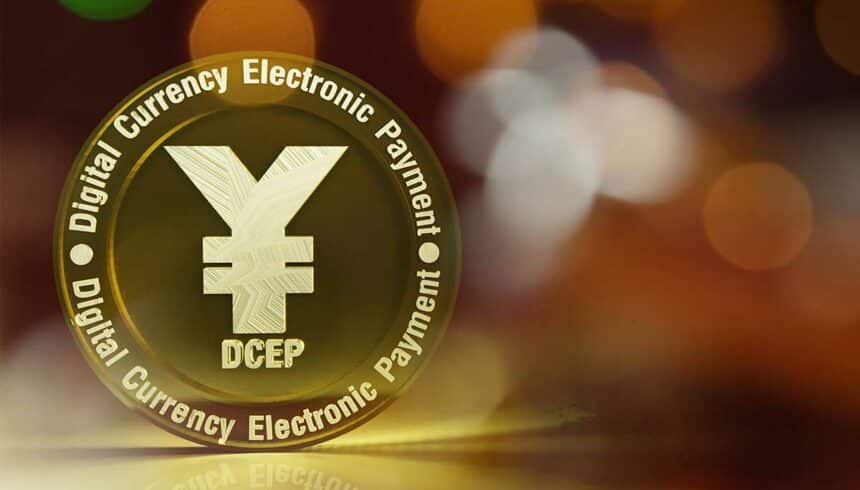Earlier this summer we published an article explaining how China’s DCEP currency works. Since then, China’s ambitious closed pilot scheme to create a ground-breaking digital currency has continued to gain traction.
Built on the foundations of blockchain technology, smart contracts and asymmetric cryptography, China’s revolutionary digital currency will likely become the world’s first Central Bank Digital Currency (CBDC) issued by China’s state bank — the People’s Bank of China (PBoC).
While many central banks around the world are also developing their own digital currencies, China is outperforming other central banks thanks to its advanced digital payments ecosystem. Staggeringly, 83% of digital payments and transactions in China are made through mobile devices.
Join us as we take another glance through the looking glass and uncover how China is using DCEP to step up as a global digital currency pioneer.
The PBoC is currently conducting pilot tests of the national digital currency around the country. Initially launching in Shenzhen, Suzhou, Chengdu and Beijing satellite city, Xiong’an, China’s DCEP initiative is primed and ready to shake up the way global economies and national governments think about digital currencies.
According to the PBoC, DCEP will be the driving force behind a widespread move to a cashless society. On top of that, the digital currency gives the central bank more control over the payments market currently dominated by the private sector.
How Does DCEP work?
DCEP is not a cryptocurrency in the traditional sense as the currency uses a central state-owned database to control the issuance and exchange of funds (rather than a decentralised ledger). China has already completed the backend infrastructure of DCEP, including the setting of parameters, research & development for its functions, and joint debugging testing.
The PBoC has successfully developed an authorised app that gives users access to an e-wallet with a seamless alternative to physical money. Due to the fact that digital currencies don’t conform to the traditional understanding of money, they are often met with resistance by central banks and the lack of state support can make them extremely volatile and risky.
However, China believes the answer lies in creating a centralised alternative where digital currency is accepted for taxation purposes, ultimately allowing Chinese citizens to reap the benefits of a stable and regulated digital currency.
How Does DCEP in China Work Alongside the Yuan?
The value of DCEP will be marked 1:1 with the Yuan and issued to citizens through a selected network of commercial banks. At its core, DCEP has been created as a digital form of the Yuan — a sovereign issued currency that receives no speculation to its value. Having the same function as the Yuan makes DCEP a more credible currency.
Under a centralised digital currency system, the PBoC will issue DCEP to commercial banks against equivalent cash or deposits at the central bank. The central banks can then distribute DCEP to their customers via digital wallets (providing the individual passes the secure verification process).
The significance of DCEP lies in the fact that it is designed as a replacement of the reserve money system, cutting costs and friction of conventional wire transfers. As regulators can better monitor digital currency transactions, some consider DCEP as the solution to alleviate risks of physical monetary transactions such as anonymous counterfeiting, money laundering and illegal financing.
Beyond any doubt, DCEP will provide a convenient payment method for Chinese citizens and create more efficiency in the financial system. However, under a centralised system, the anonymity of cash is replaced by a supervised, traceable digital ledger. This traceability raises concerns about civil liberties and the use of the currency as a means to maintain social control.
Specific details around the true nature of China’s DCEP have been largely vague, which has forced parties outside of the Chinese authorities to make educated guesses about the future of the digital currency. The jury is out on how the technology will integrate into Chinese society, how the government will control volatility, and how the PBoC intends to use the technology to enforce monetary policies.
Rather than having to rely on estimated financial forecasts, the digital data collected by DCEP payments gives the PBoC a vault packed to the brim with customer information. This data that can be used to monitor economic trends, predict consumer behaviours and proactively resolve issues before they manifest. If the government or central bank decides they want to deactivate a customer’s e-wallet or reverse a cash transaction, they can do so at the press of a button.
The goal of the Chinese authorities is to internationalise the Yuan so that it can compete with the US Dollar. DCEP is anticipated to be successful because there are thirty-nine million Chinese citizens who live outside of China. International connectivity will be a key driving force behind the global roll-out and uptake of DCEP.
Without a prompt response to DCEP, the US Dollar’s dominance in the global financial market could diminish as China’s pioneering technical infrastructure continues to shape the future of finance.
Keep up to date with the Latest Digital Finance Trends with INAA
We’re the International Association of Independent Accounting firms, established over 25 years ago to facilitate cross-border business.
Here at INAA, we connect accounting firms who aim to deliver quality professional services around a shared vision to make global business personal, and take personal business global. Our collaborative association of international businesses is committed to being a part of the conversation around the future of digital currencies like DCEP.
Join today to start building powerful business relationships.
